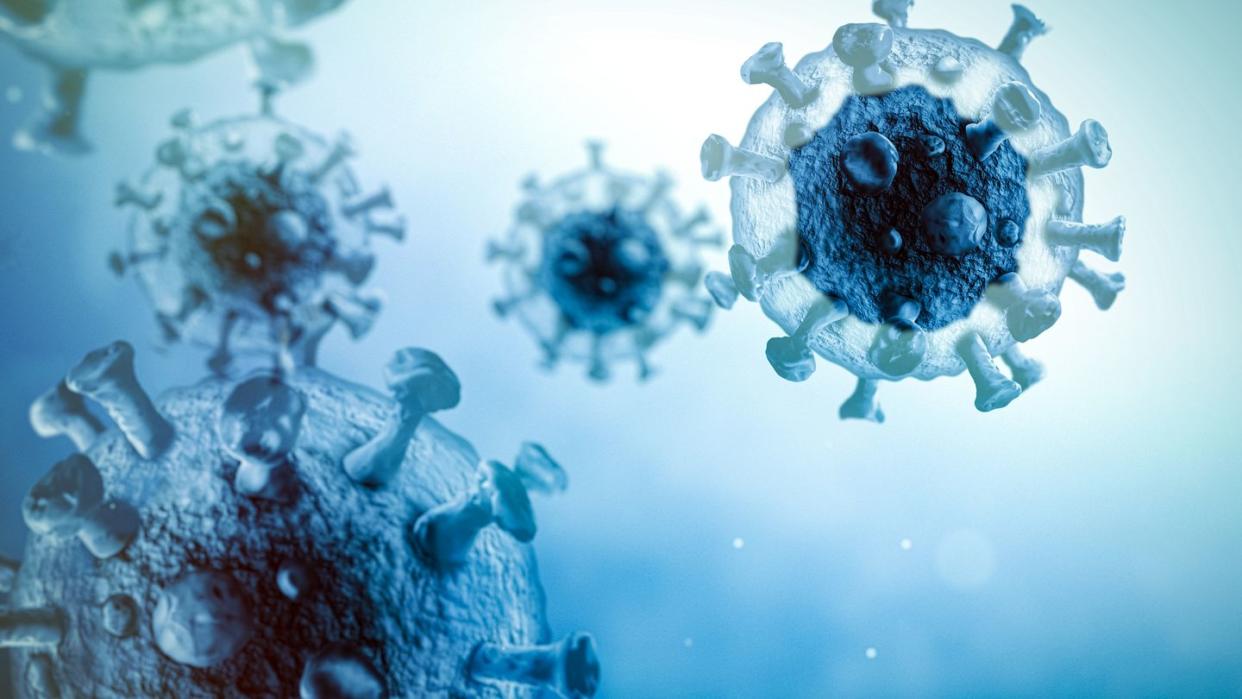What Doctors Want You to Know About the Latest COVID-19 Variant, LB.1

LB.1 is the newest variant making headlines.
A part of the FLiRT variants, it’s helping spur the summer COVID wave.
Experts say this variant may be more immune evasive than previous variants.
While government data that tracks COVID-19 isn’t as robust as it used to be, it’s clear that we’re in the middle of a summer wave. Contributing to the uptick is the newest COVID variant, LB.1.
Right now, emergency room visits due to the virus are up more than 23% than they were during the previous week and hospitalizations are up more than 13%, according to data from the Centers for Disease Control and Prevention (CDC).
The latest variant hasn’t gotten a lot of attention so far, but it’s been steadily causing issues in the U.S. since late spring.
Meet the experts: Thomas Russo, M.D., professor and chief of infectious disease at the University at Buffalo in New York, Amesh A. Adalja, M.D., infectious disease expert and senior scholar at the Johns Hopkins Center for Health Security.
So, what is LB.1 and does it have unique symptoms? Infectious disease experts break it down.
What is the latest COVID variant, LB.1?
LB.1 is the third most common COVID-19 variant in the U.S. right now, per CDC data. It’s a descendant of JN.1, along with common variants KP.2 and KP.3, according to the Infectious Diseases Society of America (IDSA).
“LB.1 is another Omicron variant,” says Amesh A. Adalja, M.D., infectious disease expert and senior scholar at the Johns Hopkins Center for Health Security. It’s also a FLiRT variant, along with KP.2, KP.3, and KP.1.1, he points out.
“It’s a little bit different from KP.2 and KP.3 in that it has a deletion in the spike protein,” says Thomas Russo, M.D., professor and chief of infectious disease at the University at Buffalo in New York. (In case you’re not familiar with it, the spike protein is what SARS-CoV-2, the virus that causes COVID-19, uses to attach itself to your cells and infect you.)
LB.1 first emerged as a blip on the CDC’s radar back in April but has become more dominant over the past few weeks.
Is LB.1 more transmissible?
It’s hard to say at this point. “There is some lab data to suggest it may be more infectious than KP.2 and perhaps KP.3,” Dr. Russo says. “It appears to be more immune-evasive.”
But Dr. Adalja points out that there seem to be fewer COVID-19 cases caused by LB.1 in the latest CDC surveillance data released than in the previous round of data.
“It seems to be more common in the East and Southeast,” Dr. Russo says.
LB.1 symptoms
There is chatter online about people having a really intense sore throat with COVID-19 lately, and it’s possible that’s due to LB.1 (although tricky to know for sure). But doctors say that COVID-19 symptoms are largely the same as they’ve been over the past year or two.
“There’s not enough data to report any differences in symptoms,” Dr. Adalja says. “Each variant has certain symptoms anecdotally attributed to it, but they are mostly all still part of the same spectrum of illness of all versions of the virus.”
According to the CDC, those symptoms may include:
Fever or chills
Cough
Shortness of breath or difficulty breathing
Fatigue
Muscle or body aches
Headache
New loss of taste or smell
Sore throat
Congestion or runny nose
Nausea or vomiting
Diarrhea
Do vaccines protect against LB.1?
It depends on how you look at it. Dr. Russo notes that the COVID-19 vaccine is “imperfect” at keeping people from getting the virus. However, it can help lower the risk you’ll end up getting seriously ill, being hospitalized, and dying from the virus.
Dr. Adalja agrees. “The current vaccine is not very effective at durable protection against infection—and that has been the case for some time—with the current slew of variants, though it is protective against severe disease,” he said.
That’s why Dr. Russo still recommends getting the updated COVID-19 vaccine, if you haven’t already. “It will afford more protection than not being vaccinated,” he says.
How to prevent LB.1
The best way to lower your risk of getting LB.1 is the same as it’s always been, although the steps to take really depend on your risk tolerance, Dr. Adalja says.
“High-risk individuals should keep up to date with vaccinations and the extremely high-risk immunocompromised individuals should discuss the monoclonal antibody Pemgarda with their physician,” he says.
If you’re high risk for getting sick—meaning you’re pregnant, an older adult, immunocompromised, or have certain underlying health conditions—it’s also a good idea to mask up in crowded indoor settings, like when you go to the grocery store, Dr. Russo says. “You’ll also want to avoid indoor settings where you can’t wear a mask, like restaurants, until we’re on the back side of this wave,” he adds.
Dr. Rusos says it’s likely that the summer wave won’t die down until the end of the season. Soon after, a new COVID-19 vaccine that’s better targeted to the FLiRT variants like LB.1 should be available.
You Might Also Like

 Yahoo News
Yahoo News 
